Frigidaire MDB100, MDB110, F71C12, MDB125 User Manual
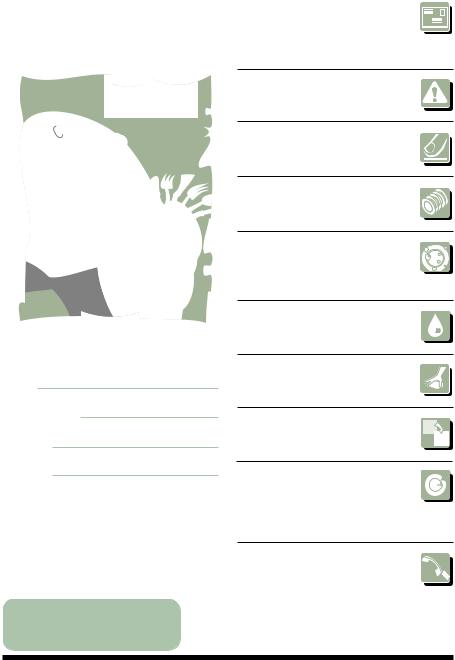
Dishwasher
Use & Care Manual
Models: MDB100, MDB110 |
Product Registration |
MDB125, F71C12 |
Card |
|
Please fill in completely, sign and |
|
return promptly! |
Record All Information
For Future Reference
Brand:
Purchase Date:
Model #:
Serial #:
(located on right side of tub)
Questions? 1-800-444-4944
(United States)
1-800-661-9913
(Canada)
Visit Frigidaire Company’s
Web Site at
http://www.frigidaire.com
Safety |
|
Instructions ............. |
2-3 |
Operating |
|
Instructions ............. |
4-6 |
Preparing and |
|
Loading Dishes ....... |
7-8 |
Dishwasher |
|
Dispenser and |
|
Detergents............. |
9-11 |
Factors Affecting |
|
Performance ............ |
12 |
Care and |
|
Cleaning ............... |
13-14 |
Changing Color |
|
Panels ................... |
15-16 |
Solutions to |
|
Common |
|
Dishwashing |
|
Problems .............. |
17-20 |
Consumer Services |
|
Warranty & Service .... |
21-24 |
Versión en español ......... |
22 |
READ AND SAVE THESE INSTRUCTIONS
P/N 154336703 (9812)
1
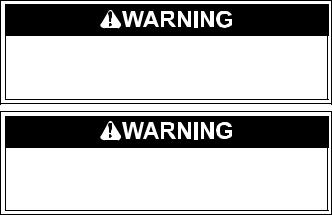
 Important Safety Instructions
Important Safety Instructions
This symbol will help alert you to such dangers as personal injury, burns, fire and electrical shock.
To reduce the risk of fire, electrical shock, or injury when using your dishwasher, follow basic precautions including the following:
•Read all instructions before using your dishwasher.
•Use your dishwasher only as instructed in this Use and Care Manual.
•DISHWASHER MUST BE ELECTRICALLY GROUNDED. Read the Installation Instructions for details.
•This dishwasher is designed to operate on regular house current (120 V, 60 Hz). Use a circuit equipped with a 15 ampere fuse or circuit breaker. Use a 20 ampere fuse if dishwasher is connected with a food waste disposer.
•Do not operate dishwasher unless all enclosure panels are in their proper place.
•Dispose of discarded appliance and shipping or packing material properly.
•To avoid entrapment and/or suffocation, remove door or door latch mechanism from any dishwasher that is discarded or not in use.
•Keep young children and infants away from dishwasher when it is operating.
•Do not let children abuse, sit, stand or play on door or racks of a dishwasher.
•Use only detergents and rinse aids recommended for use in a dishwasher.
•Store dishwasher detergent and rinse aids out of the reach of children.
2
 Important Safety Instructions (continued)
Important Safety Instructions (continued)
•Do not wash plastic items unless marked ‘‘dishwasher safe’’ or the equivalent. Check with manufacturer for recommendations, if not marked. Items that are not dishwasher safe may melt and create a potential fire hazard.
•If the dishwasher drains into a food disposer, make sure disposer is completely empty before running dishwasher.
•Disconnect electrical power to dishwasher before servicing.
•Repairs should be done by a qualified technician.
•Do not tamper with controls.
•Do not touch the heating element during or immediately after use.
•When loading items to be washed:
-Locate sharp items and knives so that they are not likely to damage the door seal or tub.
-Load sharp items and knives with the handles up to reduce the risk of cut-type injuries.
•Under certain conditions, hydrogen gas may be produced in a hot water system that has not been used for 2 weeks or more. HYDROGEN GAS IS EXPLOSIVE. If hot water system has not been used for such a period, before using dishwasher, turn on all hot water faucets and let water flow from each for several minutes. This will release any accumulated hydrogen gas. HYDROGEN GAS IS FLAMMABLE. Do not smoke or use an open flame during this time.
•Do not store or use combustible materials, gasoline or other flammable vapors and liquids in the vicinity of this or any other appliance.
SAVE THESE
INSTRUCTIONS
Instructions appearing in this Use & Care Manual are not meant to cover every possible condition and situation that may occur. Practice common sense and caution when installing, operating, and maintaining any appliance.
©1998 White Consolidated Industries, Inc. All rights reserved. Printed in U.S.A.
3
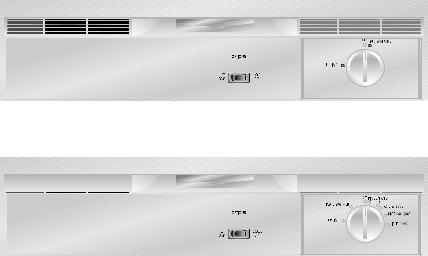
 Operating Instructions
Operating Instructions
The model number can be found on right side of tub just inside the door. Features and appearance may differ depending on the model you selected.
Getting Started
1.Load dishwasher (See Preparing and Loading Dishes).
2.Add detergent (See Dishwasher Dispenser & Detergents).
3.Add rinse aid, if needed (See Rinse Aid).
4.Turn dial clockwise to select cycle (See Wash Cycle Selections).
5.Select desired energy OPTIONS (See Energy Options).
6.Run hot water faucet nearest dishwasher until water is hot. Turn water off.
7.To start, close door to latch.
4

 Operating Instructions (continued)
Operating Instructions (continued)
Wash Cycle Selections
Note: Not all cycles available on all models.
Pots & Pans
For pots, pans, casseroles and dinnerware with dried-on or baked-on soils:
•Turn dial to POTS & PANS.
•Select desired OPTIONS.
Normal Wash
For regularly soiled dishes and silverware:
•Turn dial to NORMAL WASH.
•Select desired OPTIONS.
Light Wash
For lightly soiled or pre-rinsed dishes and silverware:
•Turn dial to LIGHT WASH.
•Select desired OPTIONS.
Rinse/Hold
For rinsing dishes that will be washed later:
•DO NOT USE detergent.
•Turn dial to RINSE/HOLD.
Plate Warmer
For warming dishes and serving plates before serving hot foods.
•Load clean plates and dishes to be warmed.
•Turn dial to PLATE WARMER.
•Select HOT DRY option.
Cycle Chart - MDB100, MDB110
Cycles |
|
Water |
Time |
Washes/Rinses |
|
|
(approx.) |
(approx.) |
|
|
|
|
|
|
|
|
|
Normal |
6.9 |
gal. |
109 min.* |
2 washes |
4 rinses |
Wash |
5.7 |
imp. gal. |
|
|
|
|
26.1 |
liters |
|
|
|
Light |
5.8 |
gal. |
103 min.* |
2 washes |
3 rinses |
Wash |
4.8 |
imp. gal. |
|
|
|
(MDB110) |
22.0 |
liters |
|
|
|
* Includes dry time.
5
 Operating Instructions (continued)
Operating Instructions (continued)
|
Cycle Chart - MDB125, F71C12 |
|
|||
Cycles |
Water |
Time |
Washes/Rinses |
||
|
(approx.) |
(approx.) |
|
|
|
|
|
|
|
|
|
Pots & |
8.4 |
gal. |
103 min.* |
2 washes |
5 rinses |
Pans |
7.0 |
imp. gal. |
|
|
|
|
31.8 |
liters |
|
|
|
Normal |
7.2 |
gal. |
95 min.* |
2 washes |
4 rinses |
Wash |
6.0 |
imp. gal. |
|
|
|
|
27.3 |
liters |
|
|
|
Light |
6.0 |
gal. |
89 min.* |
1 wash |
4 rinses |
Wash |
5.0 |
imp. gal. |
|
|
|
|
22.7 |
liters |
|
|
|
Rinse/ |
1.2 |
gal. |
10 min. |
|
1 rinse |
Hold |
1.0 |
imp. gal. |
|
|
|
|
4.5 |
liters |
|
|
|
Plate |
|
|
14 min. |
|
|
Warmer |
|
|
|
|
|
* Includes dry time. |
|
|
|
|
|
Energy Options
Hot Dry Option
HOT DRY option provides faster drying since the heating element is on during the drying portion of the cycle.
Cool Dry Option
COOL DRY option saves electricity since the heating element is off during the drying portion of the cycle. To speed drying process, open the door slightly after the cycle is complete.
Some water droplets may remain on door and tub and in areas where dishes touch silverware basket and rack.
With either option, you may see water vapor coming from vent during drying portion of cycle.
The drying option may be changed at any time during the cycle and affects only the drying period.
6
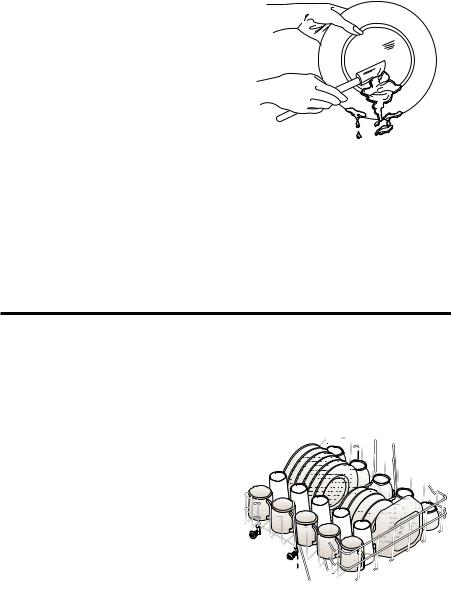
 Preparing and Loading Dishes
Preparing and Loading Dishes
Dish Preparation
Scrape away large pieces of food, bones, pits, toothpicks, etc. The continuous filtered wash system will remove remaining food particles. Burned-on foods should be loosened before loading. Empty liquids from glasses and cups.
Foods such as mustard, mayonnaise, vinegar, lemon juice and tomato based products may cause discoloration of stainless steel and plastics if allowed to sit for a long period of time. Unless the dishwasher
is to be operated at once, it is best to rinse off these food soils.
•Load racks so that large items do not prevent the detergent dispenser from opening.
•Check manufacturer’s recommendations before washing items in question.
•If the dishwasher drains into a food disposer, be sure disposer is completely empty before starting dishwasher.
Loading the Top Rack
The top rack is designed for cups, glasses, small plates, saucers and bowls.
Load glasses in top rack. Damage may occur if placed in bottom rack.
Load plastic items in top rack only. Melting may occur if placed in bottom rack.
Load items with open ends facing down for better cleaning and draining.
Damage may occur if delicate items touch each other during dishwasher operation.
Long-handled knives and utensils can be placed in top rack.
7
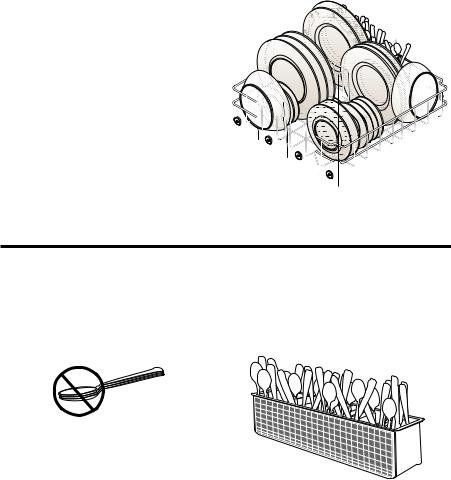
 Preparing and Loading Dishes (continued)
Preparing and Loading Dishes (continued)
Loading the Bottom
Rack
Place plates and platters so that they do not touch.
Place bowls, casseroles and sauce pans with the soiled surface facing down or toward the center. Tilt slightly for better drainage.
Be sure pan handles do not protrude through the bottom of the rack and block the spray arm rotation.
Do not block tower protector
Loading the Silverware
Basket
Mix spoons, forks and knives to prevent nesting. Mixing items gives better cleaning and drying.
For safety, load sharp knives and forks with handles up.
Be sure nothing protrudes through bottom of basket or rack to block the spray arm.
Do not mix silver and stainless to avoid damaging the silver finish.
Note: Silverware basket may vary by model.
8
